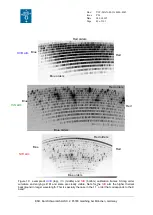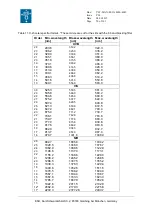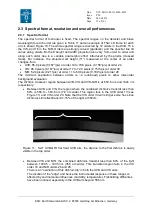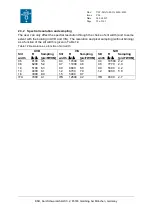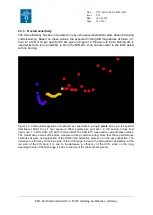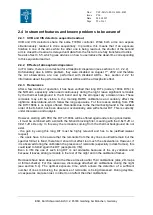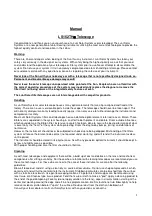
Doc:
Issue
Date
Page
VLT-MAN-ESO-14650-4942
P96
24.06.2015
40 of 161
ESO, Karl-Schwarzschild-Str. 2, 85748 Garching bei München, Germany
2.2.6 The NIR spectrograph
The NIR spectrograph is fully cryogenic. It is cooled with a liquid nitrogen bath cryostat and
operates at 105 K.
2.2.6.1 Pre-slit optics and entrance window
After the dichroic box and two warm mirrors M1 (cylindrical) and M2 (spherical, mounted on a
tip-tilt stage and used for flexure compensation, see description on p. 24) light enters the
cryostat via the Infrasil vacuum window. To avoid ghosts, this window is tilted 3 degrees
about the Y-axis. After the window, light passes the cold stop, and is directed towards the
entrance slit via two folding mirrors M3 (flat) and M4 (spherical).
2.2.6.2 Slit wheels
A circular laser cut Invar slit mask is pressed in between two stainless steel disks with 12
openings forming the wheel. The wheel is positioned by indents on the circumference of the
wheel with a roll clicking into the indents. All the science observation slits are 11” high and
different widths are offered from 0.4” to 5” (see Table 8).
Table 8: NIR spectrograph slits and calibration masks
Size
Purpose
0.4”
11” slit
SCI / CAL
0.6”
11” slit
SCI / CAL
0.9”
11” slit
SCI / CAL
1.2”
11” slit
SCI / CAL
5.0”
11” slit
CAL
0.6”
11” JH slit
#
SCI / CAL
0.9”
11” JH slit
#
SCI / CAL
Row of 9 pinholes of 0.5”
spaced at 1.4”
CAL
0.5”
pinhole
CAL
Blind*
SCI / CAL
In July 2011 during the intervention on XSHOOTER the NIR slit wheel was modified, the 1.5”
slit was removed (not offered since P88) and 2 new slits of 0.6” and 0.9” with a stray-light K
band blocking filter added. Scattered light from the strong thermal radiation in the reddest
order of the NIR arm affects very significantly the background level in the J and H bands. The
goal is to offer the possibility of low background observations in the J and H bands, to the
expense of wavelength coverage (i.e cutting
the K-band
). Note that the normal 0.6" and 0.9"
slit with the full wavelength coverage are still offered.
* The blind position can be set if the NIR arm observation is not needed or in case the NIR
arm will be highly saturated to do not damage the detector and avoid the remanence. It is
also used for the measurement of the instrumental background.
#
new slits with K-band blocking filter
























